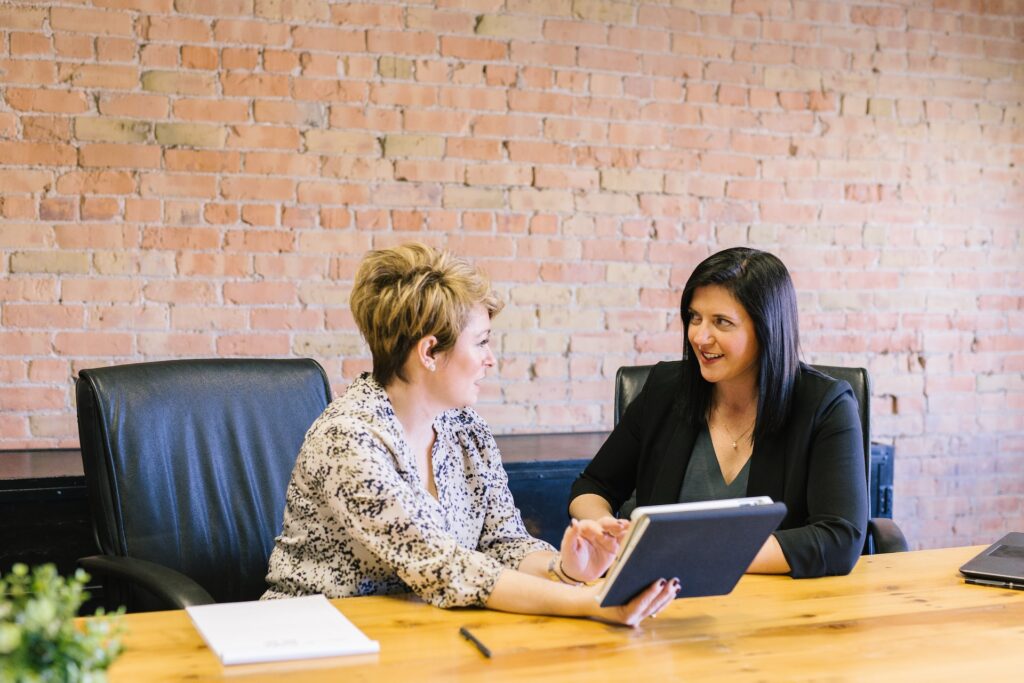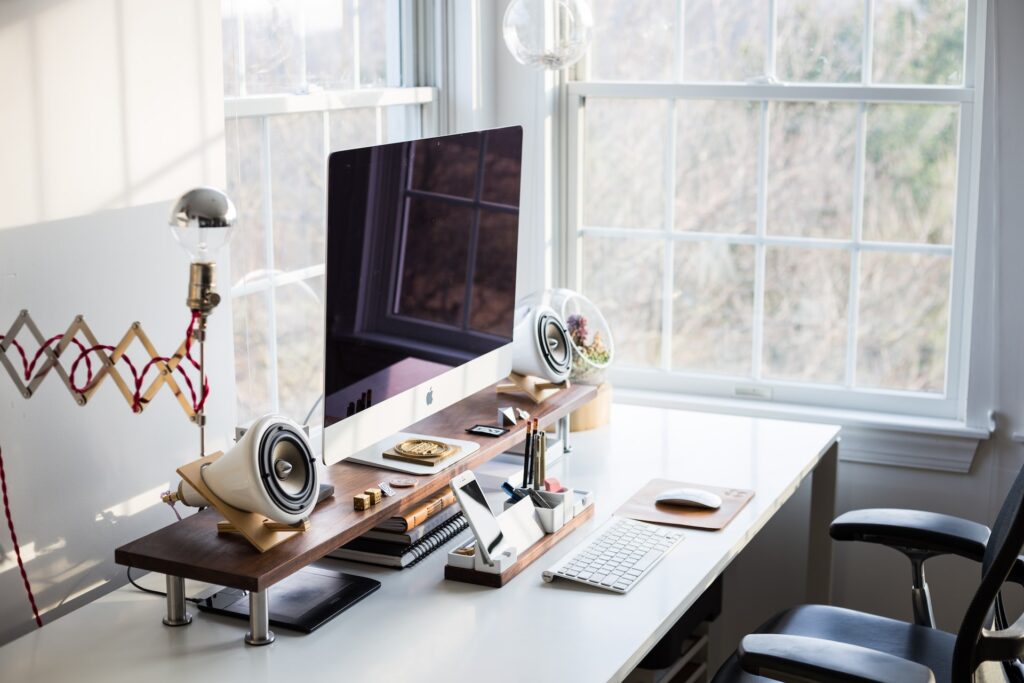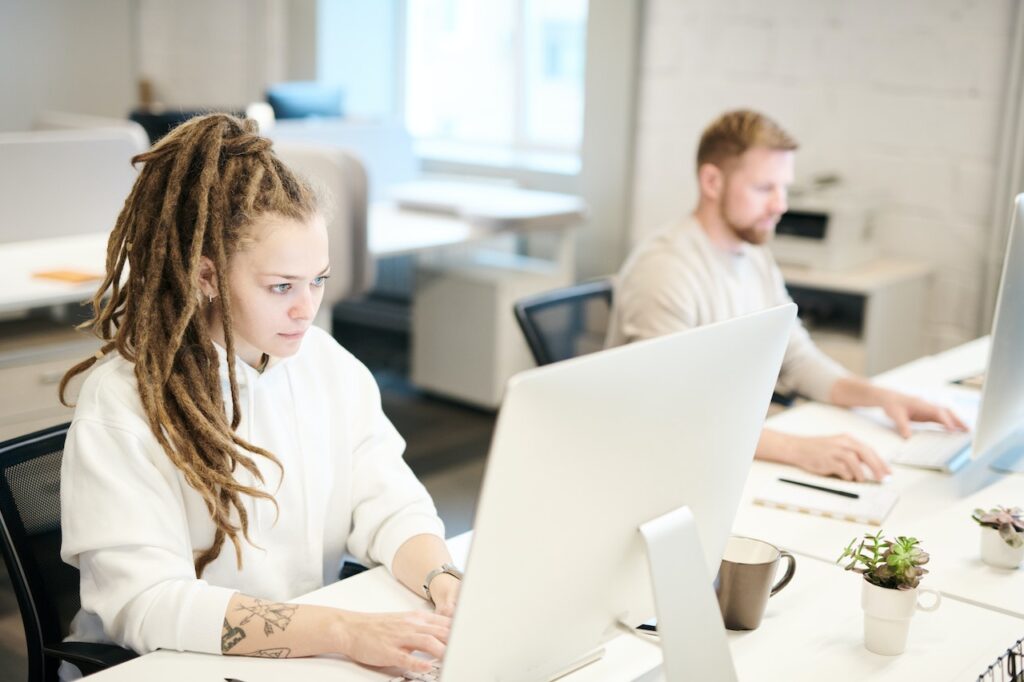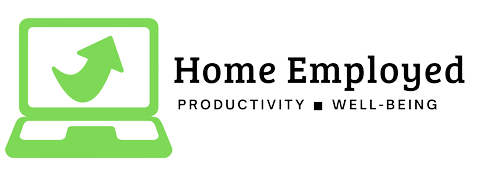If you want to create a functional home office and have you ever felt like your office was a total mess? Maybe there’s just not enough space to put everything down and work, or maybe you always feel like you’re struggling to find the time to get everything done. In this article, we’ll show you how to create a functional home office that’s both organized and comfortable.
What is the function of the Home Office? A functional home office can be broadly divided into two categories. Firstly, a home office is a dedicated space in which you will work. This is the first step in creating work-life boundaries. Secondly, it’s a space which should be conductive to work through organization, proper space layout, and minimizing distractions. In this article we will focus on the second part.

The Purpose of the Home Office
The purpose of the home office is to provide efficient and productive working conditions to effectively complete your work. This includes providing you with the space and tools necessary to accomplish your work obligations. Whether that is art supplies or a printer, having the right tools is essential for your work. Your home office also helps to promote transparency and personality into who you are during virtual meetings.
With that said, you want your home office to compliment your work whatever it may be. In other words, creating a functional space varies for every individual, but the essentials stay the same. You want to assess the functions required from the space, then design the layout, implement the right tools, and lastly design the office to be conductive to working.
The Functions of the Home Office
Begin by assessing your desired functions from your home office. Start by brainstorming and listing out all the things you want to do in your space. The home office is responsible for a variety of tasks and responsibilities, both big and small. Some of the most common functions include:
- Managing personal finances
- Handling paperwork
- Keeping track of household finances
- Drafting documents
- Completing administrative tasks
- Typing and researching on a computer
- Practicing presentations
- Making calls
- Reading documents

Tips for Creating a Functional Home Office
If you’re looking to up your productivity and efficiency in the home office, here are some tips to help you get started:
1. Set realistic goals. Don’t expect to be able to do everything at once; instead, break your tasks down into small, manageable steps. This will help you stay focused and motivated.
2. Organize your space. Make sure all your materials are easily accessible and organize your desk so that you can work quickly and efficiently.
3. Use technology to your advantage. If possible, try to use electronic tools like computers and phones to simplify your workflows.
4. Take advantage of group meetings and brainstorming with colleagues. These are a great opportunity to building relationships and broadening your knowledge.
When it comes to creating a functional home office, there are a few things to keep in mind.
First, make sure that your office is situated in an area where you can easily access it. If possible, try to find a space that has room enough for a desk and chair, as well as plenty of cabinet and drawer space. Additionally, make sure that the lighting is good natural light. Avoid fluorescent lighting, which can be damaging to your eyes.
When it comes to furnishing your office, don’t be afraid to go with eclectic pieces that work together. For example, use a large credenza as a filing cabinet and have smaller furniture nearby for working on projects. Alternatively, opt for an open-concept design in which all of the furniture is placed around the perimeter of the room. This allows you to move around more easily and increase productivity.
Last but not least, take some time each day to declutter your office and get rid of any unnecessary items. This will help you focus on tasks at hand and make your workspace more efficient.
How to Decide What Items to Store in Your Home Office
If you’re like most people, you probably have a lot of items in your home that you use occasionally, but don’t necessarily need all the time. You could probably get by with just a few pieces of furniture and storage items to organize your home office.
While creating a functional home office focus on what to store in your home office. It’s important to first think about the tasks that you perform most frequently. If you primarily work on writing or online projects, then you might not need as many stationary items as someone who spends more time in meetings or business meetings.
Next, consider what type of environment you want your home office to be. If space is tight, then you might want to go with a more minimalistic approach and store only the essentials. Alternatively, if your home office is bigger than average and you have plenty of space, then it might be worth investing in a few more pieces of furniture and accessories.
The key is to figure out what works best for you and your lifestyle. Once you’ve decided on what to store, make sure to categorize it according to where it will be used most often. It’s important to note that even with storage you can create a personality artistic esthetic, here are few tips on accomplishing this. This will make finding things much easier!
Tips for Organizing a Home Office
When you’re ready to establish a home office, there are a few things you’ll want to keep in mind.
1. Set up an efficient work space. A well-organized home office is essential for staying productive and efficient. Start by creating a space with enough storage and counter space for your equipment and paperwork. If you have a computer desk, try to keep it clear of obstructions so you can see your screen easily. Importantly, you don’t want clutter around the monitor which can distract you.
2. Plan your productivity strategies. When organizing your space, think about how you’re most likely to be productive. Some people work best in an open environment where they can move around easily, while others prefer more calm and privacy in their space. Experiment to see what works best for you to create a functional home office.
3. Stay organized with systems. One of the best ways to stay organized is to use systems – like folders or labels – to help keep everything straight. This will also help you avoid making mistakes, since everything will be easy to find when you need it.
4. Get professional help if necessary. If your home office is beyond your ability to clean, organize or manage systems, consider hiring a professional organization consultant or organizer. This will payout dividends over all the future years of working from your home office.

How to Arrange Your Work Area Layout
When you’re trying to create a functional home office, it’s important to layout your work area in a way that is conducive to productivity.
The first step is to determine the size of your work area. Once you have this information, you can begin arranging your furniture accordingly.
If you have a large work area, try to arrange your furniture in a way that allows you to move around easily. If you have a smaller work area, try to group related pieces of furniture together.
Once you have your furniture arranged, it’s time to think about how you want to use it. Consider how you prefer to work and then choose the equipment that will help you achieve that goal so that you can create a functional home office.
Finally, make sure that everything is easy to access. Keep your desk clean and organized so that you can focus on your work.

How to Minimize Distractions in Your Home Office
If you’re like most people, your home office is a sanctuary where you can focus on your work. But like any other area in your home, it can be distracting if you don’t take the necessary steps to keep it organized and functional.
Here are five tips for maximizing your productivity in your home office:
1. Keep your desk clean and organized. This may seem like a no-brainer, but if your desktop is cluttered with papers, folders, and books, it’s tough to focus. Clear out all the clutter, and make sure everything is placed in designated areas: a filing cabinet for paperwork, a shelf for books, and so on.
2. Establish strict time limits for working in your office. If you allow yourself to work unchecked for hours on end, chances are you’ll lose focus and get sidetracked. Set realistic limits on how long you’re willing to work each day, and stick to them.
3. Get rid of distractions. If there are things in your office that aren’t related to your work – pictures on the wall, plants sitting in pots, etc. – remove them or minimize their presence as much as possible.
4. Stay Hydrated. Keep a water bottled on your desk at all times. Do not use a glass, as this will eventually spill and cause irreversible damage. Staying hydrating is more important than you may think.
Conclusion for creating a functional home office
Your home office is a place where you can focus on your personal and professional goals. It’s an area where you can sit back, relax, and work while being surrounded by the things that make you happy.
Whether you’re a stay-at-home mom who wants to take care of your family while working on your own business or a young professional who wants to set up their home office as their first real investment, there are plenty of reasons why establishing a home office is a great idea. So go ahead and get started!















